Hand and Upper Extremities
Did you know?
In a 2012 study by the American Society of Safety Engineers, surveyed workers reported that their upper extremities were areas of their bodies most likely to be injured in the workplace.
In fact, 30% of workers reported sustaining ten or more hand injuries over the span of just one year (ASSE). The U.S. Bureau of Labor Statistics also reports that hand and upper extremity injuries are the most commonly occurring injuries in the workplace (Bureau of Labor Statistics).
We use our hands for everything — to perform tasks at work and at home, to write and communicate, to live our lives. The prevalence of workplace hand injuries shows that the hands and upper extremities are extremely vulnerable to getting hurt. The frequency and severity of hand injuries, along with their necessity in everyday life, motivates MidAmerica to provide excellent care in their Hand and Upper Extremity Clinic.
MidAmerica believes that patient education is vital to providing the highest quality of care for hand and upper extremity conditions and injuries.
MidAmerica Orthopaedics now offers Platelet Rich Plasma (PRP) Therapy to help treat things like shoulder pain.
Click on a title of a common condition or procedure to learn more.
Common Hand and Upper Extremity Conditions
Arthritis
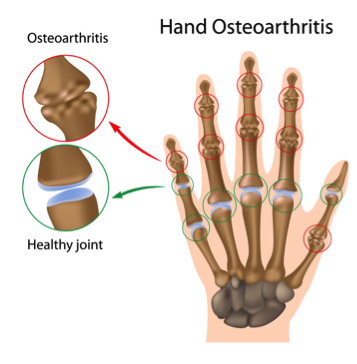
Osteoarthritis is a condition that breaks down the protective cartilage that cushions bones at joints. When that protective tissue is removed, bones grind together, resulting in pain, stiffness, difficulty moving, and the eventual breakdown of bone.
Risk factors for osteoarthritis include jobs that require repetitive motion, where the same joints are stressed over and over again. Previous joint injuries sustained from sports or work also increase the risk of arthritis.
Treatment for osteoarthritis can involve medication and physical therapy. The underlying breakdown of cartilage cannot be stopped, but symptoms can be managed with pain medication and physical therapy that strengthens and improves balance in joints.
Surgical treatments for osteoarthritis include cortisone injections, which can relieve pain and improve joint cushion. And in extreme cases, total joint replacement replaces bone and tissue with metal and plastic.
Rheumatoid arthritis is an autoimmune disorder where the body’s immune system attacks the lining of its joints. This leads to pain, inflammation, and in some cases, joint deformity.
 Symptoms include:
Symptoms include:
- Tender joints
- Pain
- Stiffness
- Difficulty moving
- Fatigue
- Fever
Risk factors for rheumatoid arthritis include age (the condition commonly occurs after age 40), family history, environmental exposures, and smoking. Rheumatoid arthritis puts people at a greater risk for osteoporosis, lung disease, heart disease, and rheumatoid nodules (i.e. bumps that commonly appear around infected joints).
Treatment can include nonsurgical methods, such as medications like NSAIDS (non-surgical anti-inflammatory drugs) and steroids, both of which decrease joint inflammation. Physical therapy helps the joints strengthen and the patient is taught new ways to move that are more gentle on joints. Surgical treatment options include joint fusion, where two joints are fused together; tendon repair; and total joint replacement.
Carpal Tunnel Syndrome
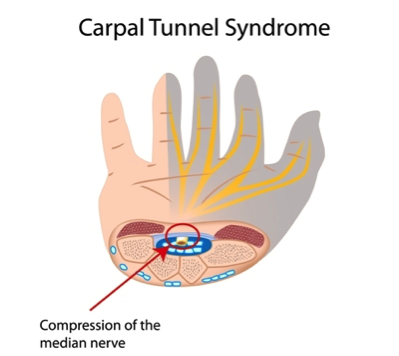
According to a 2016 study by the US Bureau of Labor Statistics, carpal tunnel syndrome is the third most commonly-occuring workplace injury, accounting for an average of 25 missed work days per year per American worker (Bureau of Labor Statistics). Its ties to the use of computers make it an incredibly prevalent condition.
The carpal tunnel is a passageway in the hand that houses the median nerve, which connects the forearm to the hand and controls movement of the fingers and wrist. Squeezing or irritation of the median nerve results in carpal tunnel syndrome, which manifests as pain, tingling, numbness and stiffness in the hand and wrist.
Risk factors include:
- Physical factors: a wrist fracture or other physical injury to the hand can put pressure on the median nerve
- Workplace factors: repetitive motion of the hand and wrist, particularly with great force and little support, can irritate the median nerve
- Medical conditions: rheumatoid arthritis, obesity, diabetes and other conditions can increase the likelihood of developing carpal tunnel syndrome
Carpal tunnel syndrome can be prevented by relaxing grip; taking frequent breaks; changing one’s grip (on a computer or other workplace equipment); and stretching or exercising the wrists. Non-surgical treatment options for carpal tunnel syndrome include wrist splints and anti-inflammatory medications. In some cases, doctors may perform a surgery that cuts a ligament in the wrist, freeing the median nerve.
Rotator Cuff Injuries
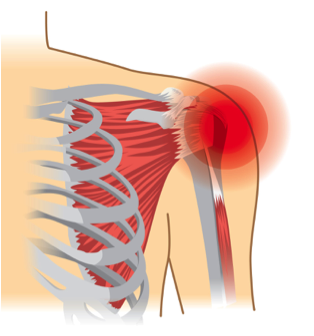
The rotator cuff is a collection of tendons and muscles that cushion the shoulder joint. Rotator cuff injuries occur most often because of repetitive motion that puts stress on the shoulder. This is often the result of a job or sport.
The symptoms of a rotator cuff injury include:
- Shoulder pain
- Stiffness and difficulty moving
- Limited range of motion in the arm and shoulder
Daily stretching and frequent breaks can help prevent rotator cuff injuries. Treatment methods include steroid injections and physical therapy to strengthen and balance the shoulder. Surgical treatments for rotator cuff injuries include tendon repair, tendon transfer, and in extreme cases, total shoulder replacement.
Lateral Epicondylitis (Tennis Elbow)
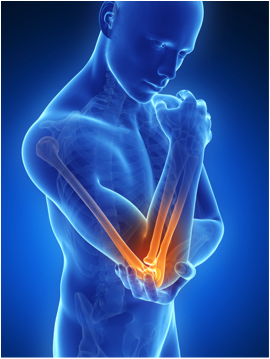
Tennis elbow, or lateral epicondylitis, is the strain of tendons in the elbow. It is the result of repetitive motion and occurs not only in athletes, but in people whose occupations involve repetitive motions of the arm and elbow. The main symptom of tennis elbow is pain that stretches from the forearm to the wrist, making it difficult to move or grip anything.
Tennis elbow is often treated by self-care methods like massage and icing. In more serious cases, a doctor might recommend physical therapy to strengthen the arm and teach a patient to move in less damaging ways. The more severe cases of tennis elbow are treated with injections of botox. Other surgical procedures remove damaged tissue. In some cases, a tenotomy is performed; a procedure in which a vibrating needle is inserted into the arm, and vibrates so fast that it liquifies the damaged tissue (Mayo Clinic).

Other common orthopaedic hand and upper extremity injuries include:
- Fractured fingers
- Dislocations (of the elbow and shoulder)
- Ligament and tendon injuries
- Nerve injuries
- Sprains (often of the fingers and wrist)
- Ganglion Cyst
- Trigger Finger
Diagnosis of Hand and Upper Extremity Conditions
Doctors use many tools, most commonly imaging tests, to diagnose hand and upper extremity conditions. At MidAmerica, doctors use:
-
X-rays
doctors will often conduct x-rays of the wrist and shoulder. An x-ray can eliminate the possibility of other causes of pain. Cartilage loss can be seen on x-rays, allowing doctors to diagnose osteoarthritis. -
MRI
a magnetic resonance imaging test (MRI) shows bone and cartilage, allowing doctors to track the progress of arthritis. -
Ultrasound
can be used in exploring a rotator cuff injury, and can compare a healthy shoulder to the affected shoulder. -
Blood tests
are used to diagnose osteoarthritis and rheumatoid arthritis -
Joint fluid analysis
doctors can remove and test joint fluid
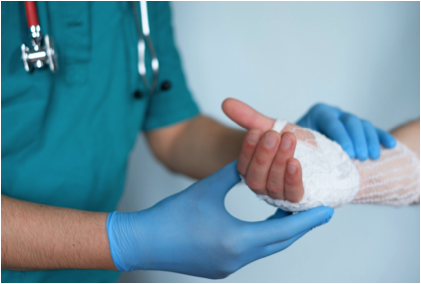
Treatment of Hand and Upper Extremity Conditions
Non-surgical treatment options for hand and upper extremity conditions start with self-care, such as icing, heat, stretching, and rest. Medication to ease pain is prescribed for many conditions of the hand and upper extremities.
Anti-inflammatory medications are also prescribed, such as steroids and NSAIDS. Therapy is often recommended as well. MidAmerica’s physical therapy and occupational therapy facilities both provide excellent care to patients with hand and upper extremity conditions.
Surgery is recommended for severe conditions. Surgical options range from injections of steroids, botox, and cortisone, to joint fusion, joint repair, tendon repair and tendon replacement. In extreme cases, total joint replacement of the shoulder, elbow, or wrist will be necessary.
When it comes to recovering from hand surgery, some cases can take as little as twelve weeks to regain full strength, and up to six months to regain full range of motion. On the other end of the spectrum, recovery from joint fusion can take six months to a year, with symptoms gradually lessening over that time. In the case of carpal tunnel surgery, recovery can take anywhere from several weeks to several months, depending on how long the median nerve was compressed before surgery. Rotator cuff surgery often takes several months, and the period of time after surgery can be painful for the patient.
To learn more about MidAmerica and to schedule appointments with our Hand and Upper Extremities Specialists, call (708)-237-7200.
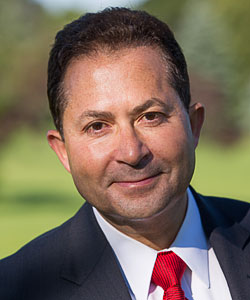
Dr. Anton J. Fakhouri
HAND AND UPPER EXTREMITIES SPECIALIST
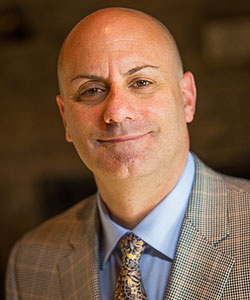
Dr. Gary Kronen
HAND AND UPPER EXTREMITY SURGEON
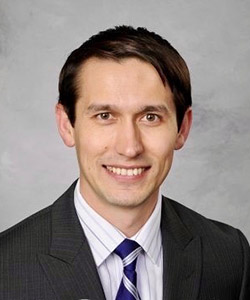
Dr. Danil A. Rybalko
HAND AND UPPER EXTREMITY SPECIALIST



